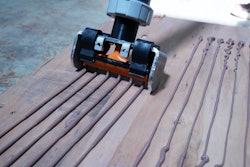According to a new resource guide from Penn State University, wood products facilities using sawdust, wood shavings and bark to heat and power their facilities on-site reduce costs and carbon footprints.
The guide, a result of a two-year collaboration by the Pennsylvania Technical Assistance Program, the Penn State College of Engineering and the Mid-Atlantic Clean Energy Applications Center, compares Combined Heat and Power (CHP) to the current system, where the on-site boiler heats the facility while power comes in from a centralized power plant. Producing both thermal and electric energy on-site was found to be 30% more efficient. Using wood waste in a CHP system can make wood product facilities self-sustaining and eco-friendly.
Penn State News reported other benefits, including reduced power demand, reduced fuel costs, reduced waste, reduced dependence on fossil fuels, more stable power supply and greater efficiency. Facilities using the CHP energy source could also sell excess capacity back to the utility company, much like facilities using solar power.
Cox Interiors, one of the three facilities examined for the study, previously had to dispose of 100 tons of wood waste per day in the face of increasingly strict landfill regulations. The facility now burns that and an additional 200 tons of wood waste purchased from other local sawmills every day. Even with a full-time, 20-truck fleet ferrying in pallets and other additional waste, the system provided a net savings of $2.9 million. The CHP plant saved almost $1 million in electricity costs and sold $48,000 worth of electricity back to the utility.
A Guide to Utilizing Combined Heat and Power in the Wood Resources Industry is available for free in PDF format.























